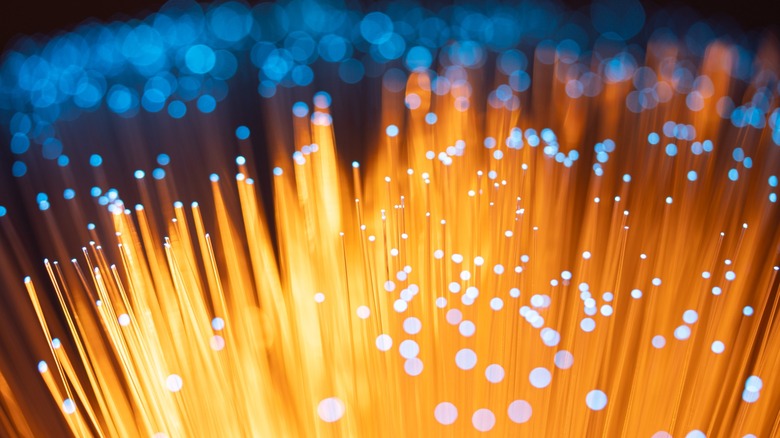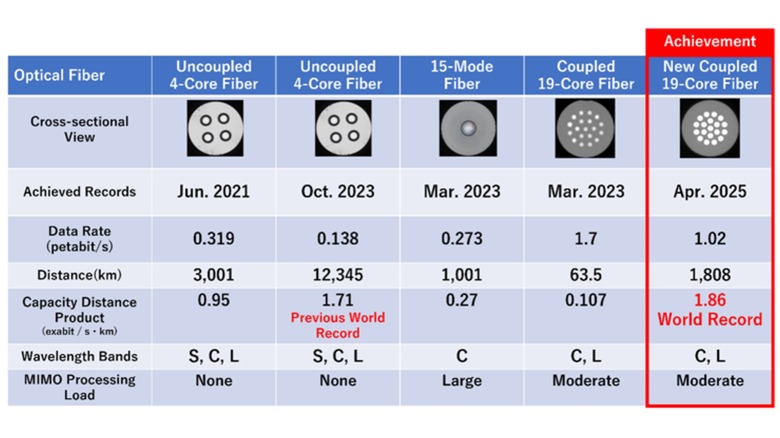Japan Has The World Record For Internet Speed - Here's How Fast It Really Is
Generally, your internet speed is measured in Megabits-per-second (or Mbps), with some services reaching Gigabits-per-second (Gbps), which is 1,000 Megabits. Well, a group of researchers in Japan, led by Japan's National Institute of Information and Communications Technology (NICT) in conjunction with Sumitomo Electric Industries have achieved downloading data at 1,020,000,000 Mbps (1.02 Petabits-per-second) and currently holds the world record for fastest internet speed and capacity-distance product.
1.02 Pbps is so fast, you can download over 1,500 80 GB files in less than a second. Downloading "Call of Duty: Warzone" (about 150 GB) would go even faster. This could herald the future of 6G, AR/VR, AI, self-driving cars, and all the technologies where we've reached an internet speed bottleneck. What makes this announcement such a big achievement isn't just the speed, though. As far back as 2021, they had also broken the speed record with 319 Tbps and then followed that up in 2023, with speeds of up to 1.7 Pbps. However, that latter figure was with a connection only about 40 miles long.
This newest benchmark, on the other hand, traveled over 1,100 miles, which is 1.86 exabits per second-kilometers in capacity-distance product. That's why it's measured in capacity-distance product — that's where the real world record is. That's no easy feat because the signal strength in optical fibers weakens with distance. It's just one of the foundational issues stakeholders have had to manage while providing fiber internet, but these researchers cracked it with some scientific wizardry.
How did they do it?
The best part is that they did it with the current fiber optics infrastructure. However, instead of information traveling through a single core, this team used a cable designed by Sumimoto Electric with 19 cores woven into the industry standard cladding diameter of 0.125 mm. This way, instead of one core having to speedily pass all that information, it had 19 passageways to transmit data simultaneously. This has a huge logistical advantage because it will fit right into the systems and infrastructure already used for current fiber internet speeds.
The researchers used special optical amplification relays to ensure that the signal stayed strong while they looped it through the cable 21 times. The effect simulated the 1,000 miles distance without the hassle of laying cross-country cables while the amplifiers boosted the signals with each cycle. The main challenge was boosting all the signals at the same time without irredeemably scrambling the data. Their solution was to use advanced software (MIMO processing) to untangle the combined signals, turning them back into usable data.
While these great strides would help any Wi-Fi network work at peak performance, it's still in the research stage, so it's not deployable yet. The implications are massive since telecom companies could eventually upgrade capacity without needing bigger cables or wider trenches. Of course, real-world rollout will take time. Challenges like signal interference between cores, manufacturing complexity, and the need for compatible hardware all have to be worked out, but it's exciting that the foundation has been proven.

